Vol 3. Part 2: Ducks: Seasonal Visitors, Seasonal Color.
John W. Garbutt- Class of 2019
Since I began visiting the ducks at Russell Creek Park, I have attempted to capture “the photo.” Around Thanksgiving the autumn color reaches its late and brief climax. I hope to use the canvas nature provides as a backdrop for the ducks on the pond. I arrive before sunrise to select a location with the sun behind me and foliage in front. The low soft morning light this time of year creates ideal conditions for photographing the ducks with colorful foliage reflections. This past autumn I had more success in capturing the photo I had in my mind’s eye. While not all of the photos contain the color reflection or are of a duck, they are some of my favorite moments.
One usually hears American Wigeons before seeing them. These vocal ducks, along with the Mallard, are ones that might be seen foraging on land more often than other species of ducks.
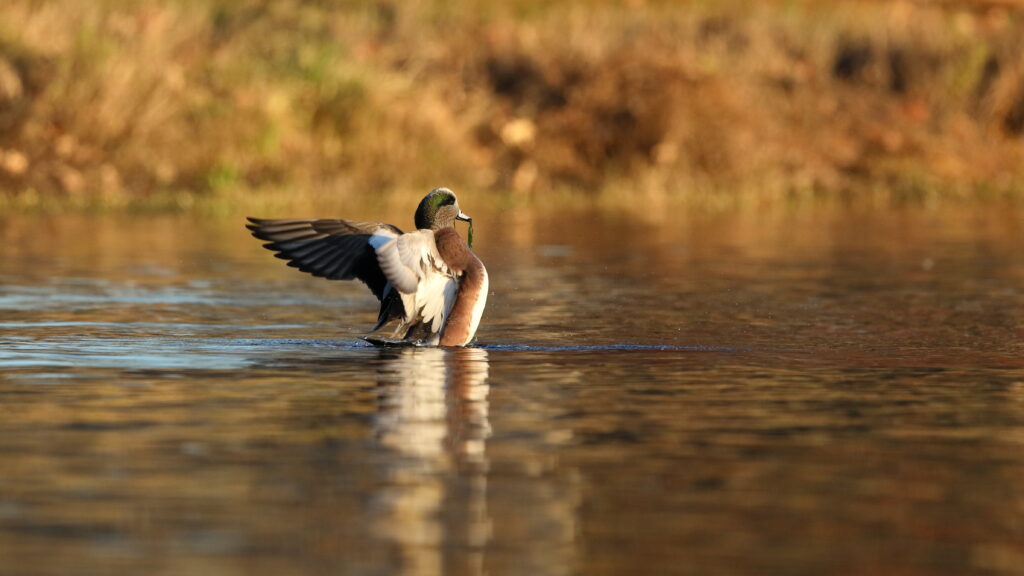
I had never witnessed an American Wigeon forage like a diving duck before. This male surfaced from a brief dive with food in its bill and flapped off the excess water. It was a very reactionary shot, but I was pleased with the results.
Gadwalls are a large and fairly “plain” duck. They can be numerous along the edges of ponds as they forage off of the banks and in the shallows.

Female Gadwall just after sunrise as it paddled from west to east, illuminating her front.

Pair of Gadwall, male left, female right.
Northern Shovelers are a duck with a fitting name that emphasizes its most notable field mark, its shovel-like bill. Shoveler bills contain just over 100 comb-like projections called lamellae that they use as filters to forage along or just under the surface.

Two male shovelers molting into breeding plumage.
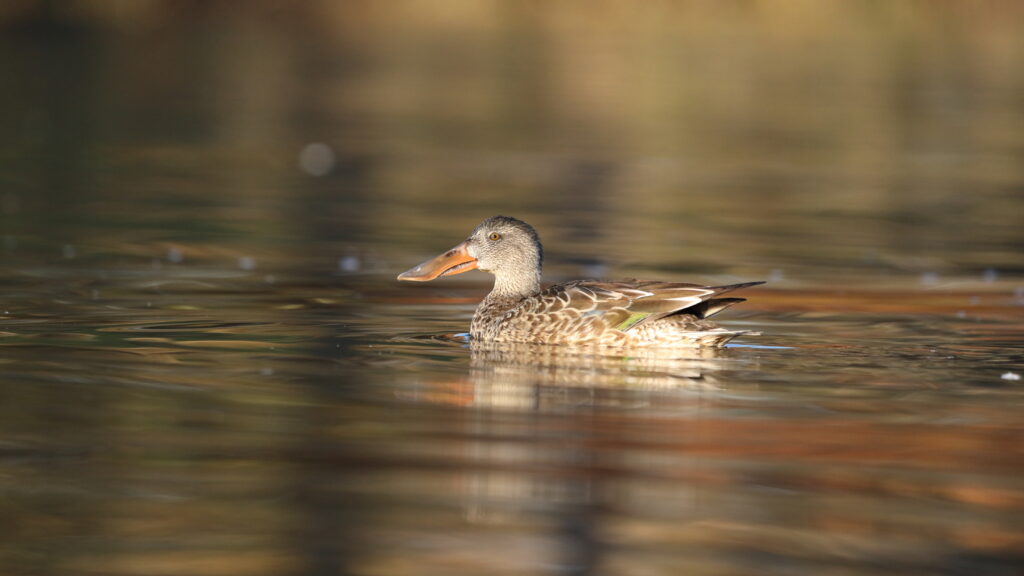
You can just make out the lamellae on this female Northern Shoveler.
Ring-necked Ducks are one of the more common seasonal visitors to our area. These small diving ducks can be very active as they dart around the surface before diving under water to feed. The namesake field mark is very hard to see. I believe this species would be better named the Ring-billed Duck. Many birds are named for difficult to see field marks because they were named after being shot and examined in hand.

You can just make out the cinnamon collar or ring in the right lighting when the base of the neck is exposed.
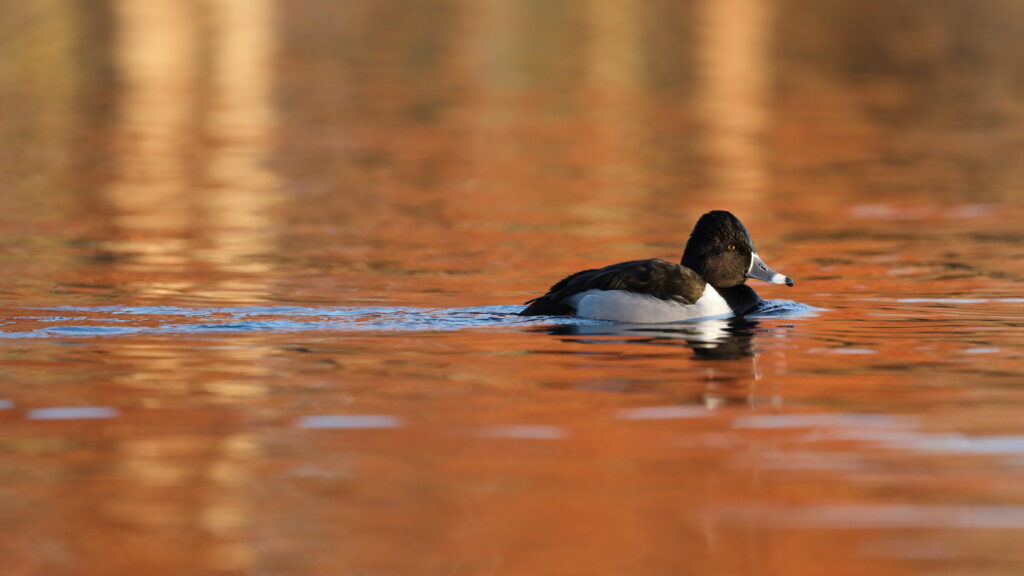
Male Ring-necked Duck in the autumnal reflection. I framed this shot to emphasize its wake.
Lesser Scaup, along with the Ring-necked, seem to be the most numerous seasonal visitors to our bodies of water. The scaup is said to be the most numerous diving duck in North America. Perhaps this is why they are the duck I have studied the most on my photography outings. I have learned to pick up on their subtle yet quick changes in how they shape their head feathers before diving under water. I love the plumage on the females. To me, the white base of the bill, caramel eyes, and rich brown feathers make a beautiful duck.

This photo of a “raise and flap” has been my computer’s lock screen since I took it.
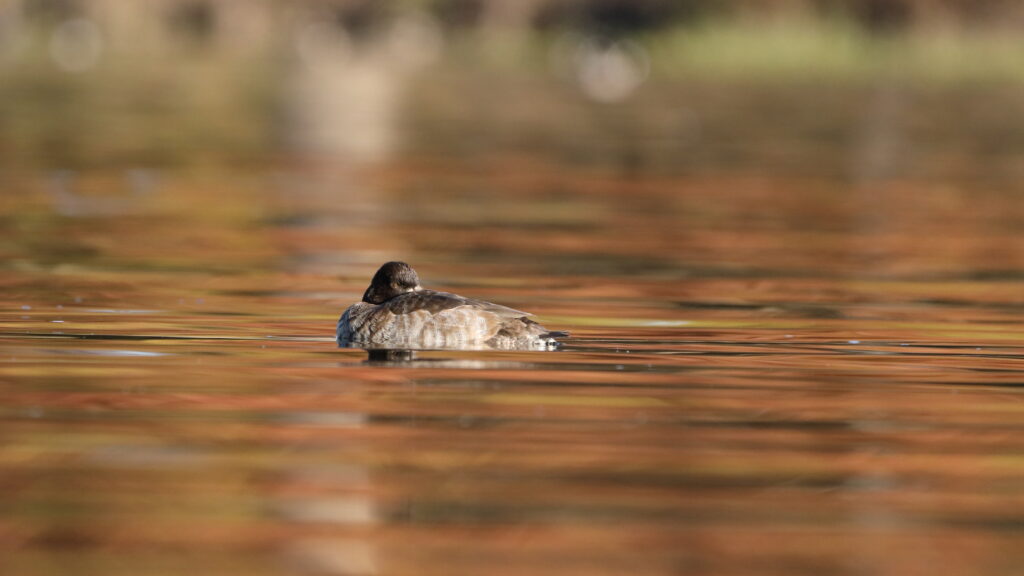
Female Lesser Scaup at rest after diving all morning.
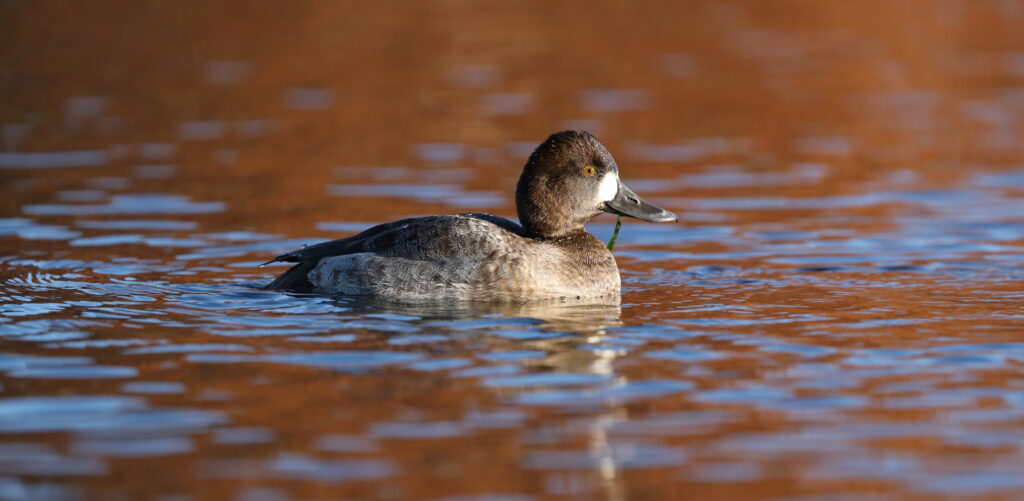

Female Lesser Scaup with breakfast on an early December morning.

One of the final shots I took as she passed by on December 11, my final visit to Russell Creek Park in 2023. I only made it out twice in early January 2024 with minimal photographic success. Until next autumn, goodbye.
While the final photo is not of a duck, the Great Egret begins to grow its breeding plumes called aigrettes toward the end of the year. I headed to Hall Office Park on Thanksgiving morning to hopefully photograph ducks in the reflections of the public art, buildings, and foliage. I ended up focusing on this Great Egret as it preened in a Bald Cypress. The harvest of these aigrettes for adorning women’s hats nearly led to their extinction and inspired George Bird Grinnell to found the Audubon Society in 1886. I chose to photograph the white bird in monochrome with a very low ISO to create a darker background emphasizing the egret’s white plumage.
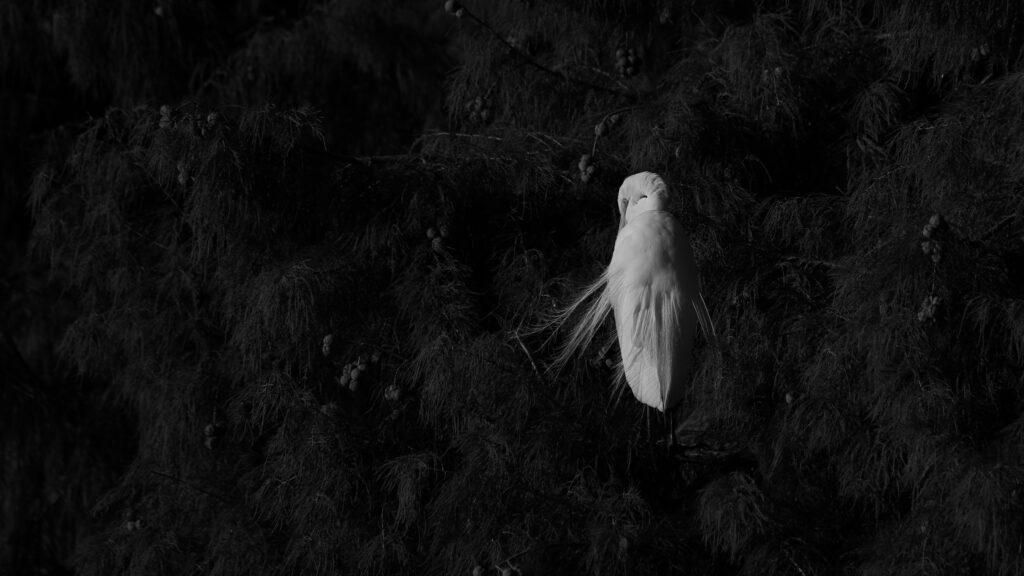
Great Egret in monochrome on Thanksgiving morning.
Despite the cold conditions amongst the rocks and water, I was thankful on this day of thanks for Grinnell’s efforts in creating the Audubon Society so that I could selfishly enjoy the beauty of this egret’s breeding plumes. We, as Master Naturalists, continue this legacy through our educational efforts.
I would like to thank my classmate and friend Lauren for her guidance and help in editing over the previous four years. I would also like to thank Michelle Connally for her help in teaching me how to post these articles and in creating an understanding on how much she puts into making Shaking the Trees possible for our chapter’s enjoyment over the last four years.



[…] John Garbutt – Thoughts from Behind the Viewfinder Vol. 3 Part 2 […]